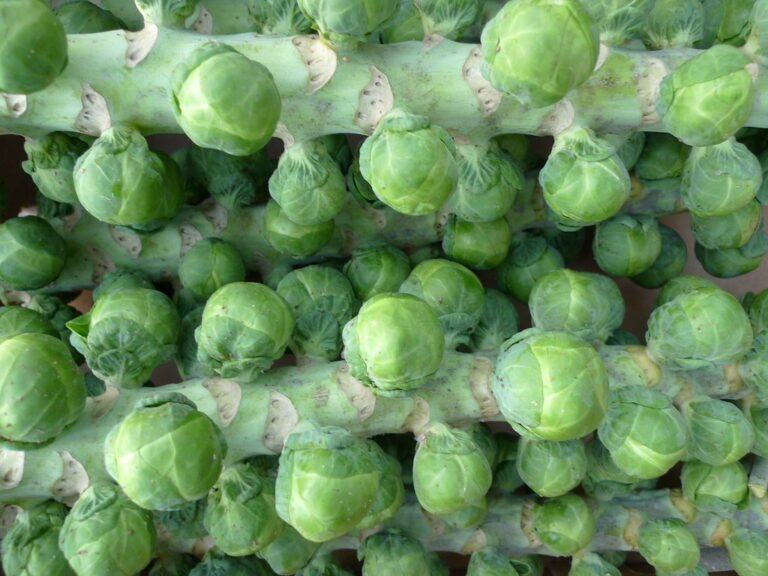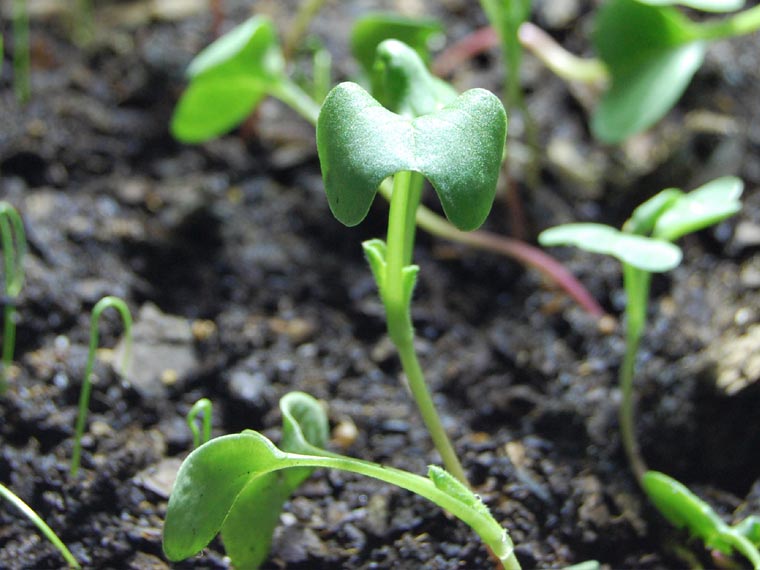A Step-by-Step Guide to Germinating Rosemary Seeds
Are you eager to start growing your own rosemary plants from seeds? Look no further! In this step-by-step guide, we'll show you exactly how to germinate rosemary seeds like a pro. You'll learn the right seeds to choose, how to prepare the germination medium, and even how to protect your seedlings from pests. With our detailed instructions and helpful tips, you'll soon be enjoying fresh rosemary straight from your garden. Let's get started!
Selecting the Right Seeds
To ensure success, you need to choose the best quality rosemary seeds for germination. When selecting your seeds, it is important to opt for those that are fresh and viable. Look for seeds that are plump, firm, and have a uniform color. Avoid any seeds that appear shriveled, discolored, or damaged. It is also recommended to choose organic seeds to ensure that they have not been treated with any chemicals. Additionally, consider the variety of rosemary you want to grow and choose seeds specifically bred for that variety. This will help ensure that you get the desired characteristics and flavor from your plants. By carefully selecting high-quality rosemary seeds, you are setting yourself up for success in your germination process.
Preparing the Germination Medium
Now that you have selected the best quality rosemary seeds, it's time to prepare the germination medium. This step is crucial in providing the ideal conditions for your seeds to sprout and grow into healthy plants. Start by choosing a well-draining and nutrient-rich soil mix. You can either purchase a pre-made seed starting mix or create your own by combining equal parts compost, perlite, and vermiculite. Fill a clean container, such as a seed tray or a small pot, with the germination medium, leaving about half an inch of space at the top. Gently pat down the soil to ensure it is level and firm. Mist the medium with water until it is evenly moist, but not soaking wet. Remember to label your container with the seed variety and date of planting. Now you are ready to move on to the next step – sowing the rosemary seeds.
Soaking the Rosemary Seeds
After preparing the germination medium, the next step in germinating rosemary seeds is to soak them in water. Soaking the seeds helps to soften their hard outer shell and encourages faster germination. To begin, fill a small container with room temperature water. Place the rosemary seeds gently into the water, ensuring they are fully submerged. Allow the seeds to soak for approximately 24 hours, giving them enough time to absorb the water. During this period, you can occasionally give the container a gentle swirl to ensure all the seeds are evenly soaked. After the soaking process is complete, carefully drain the water from the container. Be cautious not to damage the delicate seeds. Now, you are ready to move on to the next step in the germination process.
Sowing the Seeds in Containers
Start by filling your containers with the germination medium prepared in the previous step. Make sure the containers have drainage holes at the bottom to prevent waterlogging. The germination medium should be a mix of equal parts peat moss and perlite. This combination provides good aeration and moisture retention for the seeds. Gently press the medium down to ensure it is evenly distributed in the containers. Now, sprinkle the rosemary seeds on top of the medium, spacing them about an inch apart. Don't bury the seeds, as they require light to germinate. Instead, lightly press them into the surface of the medium. Finally, mist the surface with water using a spray bottle, ensuring it is evenly moist but not soaking wet. Place the containers in a warm location with indirect sunlight, and maintain the moisture level by misting the surface regularly.
Providing Optimal Temperature and Light
To provide optimal temperature and light for germinating rosemary seeds, ensure that you maintain a warm environment with indirect sunlight. Rosemary seeds require a temperature range of 70 to 80 degrees Fahrenheit (21 to 27 degrees Celsius) for successful germination. You can achieve this by placing the seed containers in a warm location, such as near a heater or on top of a heating mat. It is important to avoid direct sunlight, as it can cause the soil to dry out quickly and may harm the delicate seedlings. Instead, place the containers in an area with bright, indirect light. If you don't have access to natural light, you can also use fluorescent grow lights placed about 6 to 12 inches (15 to 30 centimeters) above the seedlings to provide adequate light. By maintaining the right temperature and light conditions, you will give your rosemary seeds the best chance of germinating successfully.
Maintaining Moisture Levels
To maintain the moisture levels for successful germination of your rosemary seeds, you should regularly check the soil and provide water as needed. Rosemary seeds require consistent moisture to germinate properly. Begin by ensuring that the soil is evenly moist before planting the seeds. After planting, monitor the moisture levels daily by gently touching the soil with your finger. If the soil feels dry to the touch, it's time to water. Use a gentle watering method, such as a misting spray or a watering can with a fine nozzle, to prevent the seeds from being dislodged or damaged. Aim to keep the soil consistently moist but not waterlogged. Avoid overwatering, as this can lead to fungal diseases and rot. By maintaining optimal moisture levels, you will provide the ideal conditions for your rosemary seeds to germinate and thrive.
Transferring Seedlings to Pots
Now that you have successfully germinated your rosemary seeds, it's time to transfer the seedlings to pots. This step is crucial for providing the seedlings with the necessary space and nutrients to continue growing. First, choose pots that are at least 4 inches in diameter and have drainage holes. Fill the pots with a well-draining potting mix, leaving about an inch of space from the top. Gently remove each seedling from the germination tray, being careful not to damage the delicate roots. Place each seedling in a pot, ensuring that the roots are covered with soil and the stem is above the surface. Water the seedlings thoroughly, but avoid overwatering. Place the pots in a sunny location and continue to water them regularly. With proper care, your rosemary seedlings will thrive in their new pots and provide you with a bountiful harvest.
Fertilizing the Young Plants
After transferring the seedlings to pots, it is important to provide proper nourishment by fertilizing the young plants. Fertilizing the plants will help ensure their healthy growth and development. Start by choosing a balanced, slow-release fertilizer with a ratio of nitrogen, phosphorus, and potassium (NPK) of around 10-10-10 or 14-14-14. Dilute the fertilizer according to the package instructions and apply it to the soil around the base of the plants. Be careful not to over-fertilize, as this can damage the roots. It is recommended to fertilize the plants every four to six weeks during the growing season. Additionally, consider using organic fertilizers, such as compost or worm castings, to provide the plants with natural nutrients. Regular fertilization will help your young rosemary plants thrive and produce aromatic leaves for your culinary needs.
Protecting Seedlings From Pests
Once you have fertilized the young rosemary plants, it is crucial to protect them from pests to ensure their healthy growth. Pests can harm the delicate seedlings, stunting their growth or even killing them. To protect your rosemary seedlings, you can start by inspecting them regularly for any signs of pests. Look for chewed leaves, discoloration, or wilting. If you spot any pests, remove them by hand or use a gentle spray of water to dislodge them. Another effective method is to use organic pest control solutions such as neem oil or insecticidal soap. These products are safe for the environment and can help deter pests like aphids, spider mites, and whiteflies. Additionally, consider placing physical barriers such as netting or row covers around your seedlings to prevent pests from reaching them. By taking these proactive measures, you can ensure the healthy growth and development of your rosemary seedlings.
Hardening off and Planting Out
To ensure the successful transition of your rosemary seedlings from indoor to outdoor environments, it is important to harden them off and then plant them out. Hardening off is the process of gradually acclimating the seedlings to the outdoor conditions, preparing them for the change in temperature, wind, and sunlight. Start by placing the seedlings outside in a sheltered location for a few hours each day, gradually increasing the time over the course of a week. This will help toughen up the plants and reduce the risk of transplant shock. Once the seedlings have been hardened off, it's time to plant them out in their permanent location. Choose a sunny spot with well-draining soil, and space the plants about 12-24 inches apart. Gently dig a hole, place the seedling in, and backfill with soil, ensuring the top of the root ball is level with the ground. Water thoroughly after planting and continue to water regularly until the plants are established. With proper hardening off and planting techniques, your rosemary seedlings will thrive in their new outdoor home.
Conclusion
Congratulations! You have successfully germinated your rosemary seeds and are well on your way to growing healthy and vibrant rosemary plants. Remember to provide them with the right care, including proper temperature, light, and fertilization. Protect them from pests and gradually acclimate them to outdoor conditions before planting them in your garden. With a little patience and attention, you will soon enjoy the aromatic and flavorful benefits of your own homegrown rosemary. Happy gardening!






